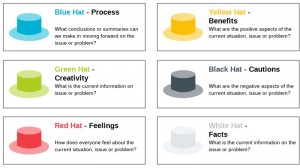Written by Cindy Irvida Mutrofin
Edited by Entusiastik
Last year, I had a wonderful experience joining an exclusive virtual workshop for 30 English teachers from five countries (Indonesia, Japan, Taiwan, Cambodia, and Uzbekistan) held by Mangrove Education. The workshop consisted of 11 meetings on Saturdays from October to December 2021. We, the teachers, learned various English teaching materials from facilitators who are experts in the education and English teaching fields. During the workshops, not only we were able to learn new methods and activities in teaching English, but we also had this group discussion session where we discussed possible modifications to the learning activities. The modification was made to adjust the learning activities to the needs and characteristics of our students so that it is applicable for use in our classroom. In this article, I’d like to share some of my favorite activities that I have learned from the workshop.
Red Card Green Card
Red Card Green Card is a simple activity to evaluate or assess our students’ knowledge as they learn. In other names, the process is called “Formative Assessment”. It is a method of ongoing assessment and it involves putting together a series of quick-fire statements and exercises to help the teacher monitor the learner’s progress during the course. To use this activity, you will need paper in red and green color. After the students get the set of two cards, the teacher can give True or False statements to the students. If the statement is correct, the students can raise the green card, but if the statement is false, they should raise the red card. You can modify the activity by giving quick-fire (tricia) questions_ as well as comprehension questions, providing True-False option, Yes-No option, agree-disagree option or emojis ( a smile for a 'Yes' and a sad face emoji for 'No').
Six Thinking Hats
Six thinking hats is a technique introduced by Dr. Edward De Bono; an expert in creative thinking. Six Thinking hats are a way to investigate issues from various perspectives. The six colors represent different aspects of thinking.

Picture 1: The Original Concept of Six Thinking Hats by Dr. Edward De Bono
This technique may also be used to teach our students about creative thinking and adapt the materials with different instructions to teach multilevel students in one class. We can change the aspect of the colors into aspects based on the activity we want to use. One of the ways to bring it into the classroom is to analyze a story using the six thinking hats technique. For this activity, we can alter the aspects of each color into the following questions:
- White Hat: represents facts and information. What is the fact that you learn from the story? Or Describe the characters, background of the place, and time of the story!
- Red Hat: Feeling and emotions. What do you feel about the story?
- Black Hat: Caution. To critics something. What are your criticisms of the story?
- Yellow Hat: Positive thinking. What is your good impression of the story?
- Green Hat: Creative. Can you think of alternative endings for the story?
- Blue Hat: Conclusion. What is the conclusion or the moral message that you get from the story?
To give some perspective, let’s analyze one of the famous stories “Cinderella” using the Six Thinking Hats method. Because the white hat represents the fact, we can alter the questions into “how many characters are there in the story?” or “mention all the characters in the story”. Then the answer to this question is “Cinderella, Prince, Step Mother, Step Sisters, and the Fairy Godmother. For another color, like green, we can alter the questions into “Can you think of the alternative endings for the story?”, the students will have a fun time making up the ending for the story and get to practice both their English skills and creative thinking.
One Word One Question
This activity is a fun way for the introduction session. Rather than using the common method of introduction, we can have a little fun with this activity. Here is how to do it:
- Write down several words or numbers that are related to you, but do not make it too obvious about them. For example, you may write tje followings: 27 Reading Kediri Banana Korean Frog 2
- Tell your students to guess what the word or the number is about. You can give them an example.
Q: Are you 27 years old?
A: Correct. I am 27 years old
Q: Is your favorite animal a Frog?
A: No. I don’t like frog. I am afraid of frog.
- After they know how to play it. Now it’s their turn. Ask the students to write some words that represent them. Afterward, put them in a group, and get the other students in the group to guess the fact about each other.
- You can also adapt this method for another activity like truth or lie; two truths one lie; etc.


.png)
.JPG)
